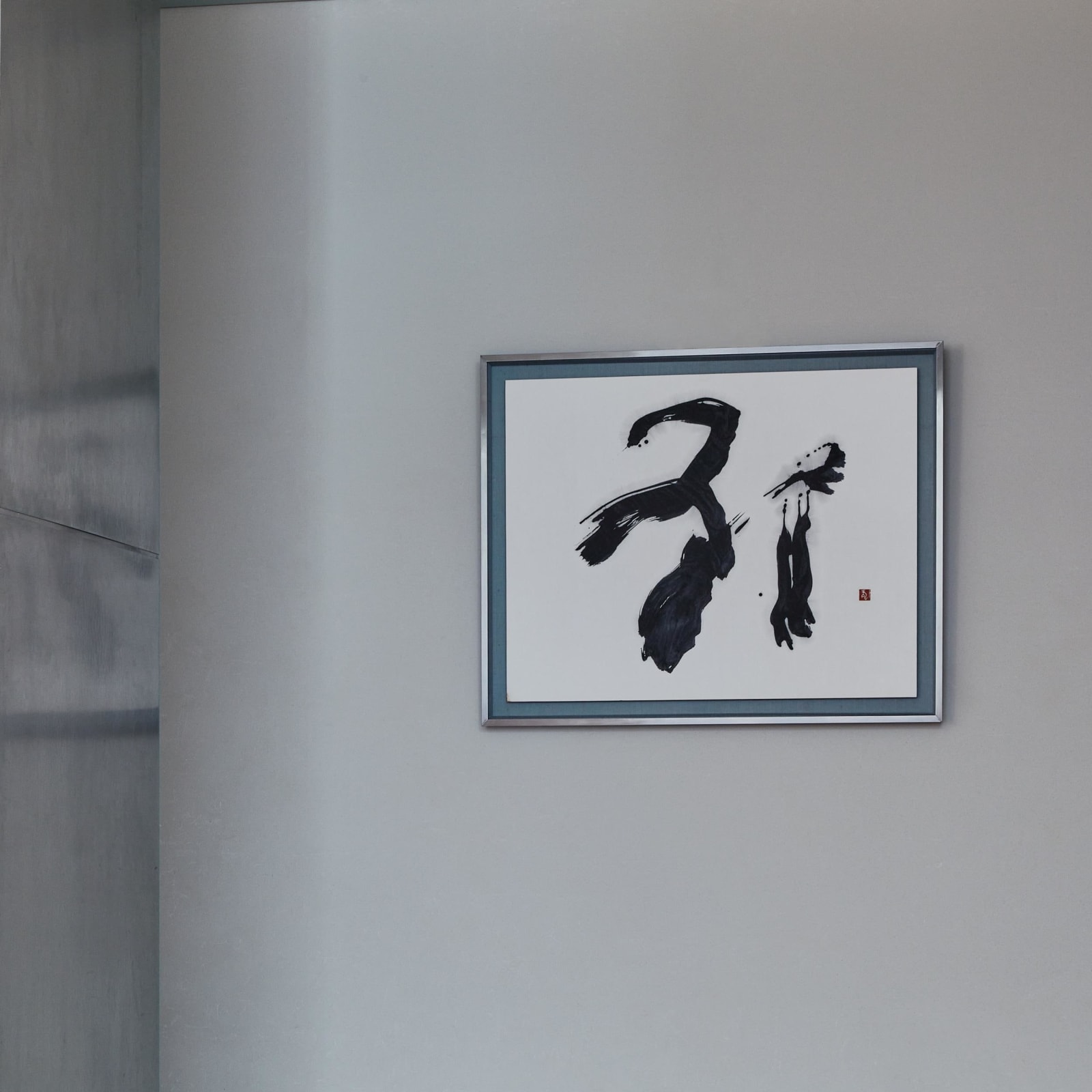Morita Shiryū (1912–1998)
Negai
Ink on paper, framed
1986
With a label signed by the artist
Seal: Ryu
66 x 83 cm
76 x 93 cm (overall)
1986
With a label signed by the artist
Seal: Ryu
66 x 83 cm
76 x 93 cm (overall)
Exhibitions
Artist Today in Kyoto 3: Morita Shiryu Exhibition. Kyoto: Kyoto Municipal Museum of Art, 1986.Morita Shiryu and Bokubi. Kobe: Hyogo Prefectural Museum of Art, 1992.
One Hundred Years Since the Birth of Morita Shiryu Exhibition. Toyooka: Hyogo Prefectural Maruyamagawa Kouen, 2012.
Literature
Morita Shiryu Catalogue Raisonné: 1952–1998. Uji: Soryusha, 2019.
In 1978, Morita Shiryu quit the Bokujinkai. He announced his resignation in a lengthy letter titled “Bokujin (ink people): A Wish” and subtitled “To build a second era for the Bokujin.” Quoting himself in detail from a text published three years earlier in Modern Art vol. 28: Sho and Ink Art (Shibundo, 1975), Morita once more emphasized the importance to not dally over current trends but diligently devote oneself to self-improvement. He envisioned the “shock” of having to carry on without him would provide fellow Bokujinkai members with the necessary impetus to reignite their creative impulses. Morita likely chose the title “Bokujin: A Wish” to echo the announcement of the founding of Bokujinkai years earlier to his former mentor Ueda Sokyu, which also was entitled “A Wish.” When aiming for change, it seems that Morita would first present his “wishes” to those around him.
Apart of two works done in 1978 and 1979, respectively, all of the fourty-threeknown other works with the character negai were made in 1986. This year coincided with the Fiftieth Bokujinkai Group Exhibition. In a commemorative lecture given by Morita Shiryu on that occasion, entitled “Calligraphy and Man,” he pleaded the younger generation to realize the deep significance of man’s unique cultural accomplishment, the ability to write. This of course links to the group of works centering on the character negai, expressing his desire to see new generations of artists continue exploring new means of expression.
Morita Shiryu (avant-garde calligrapher; 1912–1998)
Avant-garde calligrapher from Hyogo Prefecture. Like fellow artist Inoue Yuichi, Morita studied under the calligraphy master Ueda Sokyu. He co-founded the avant-garde group Bokujinkai together with Inoue and was the founder and editor of the journal Bokubi (Beauty of Ink), both of which revolutionized traditional Japanese calligraphy and spread knowledge of Japanese avant-garde calligraphy to an international audience. He was posthumously awarded the Medal of Honor with Dark Blue Ribbon.
Apart of two works done in 1978 and 1979, respectively, all of the fourty-threeknown other works with the character negai were made in 1986. This year coincided with the Fiftieth Bokujinkai Group Exhibition. In a commemorative lecture given by Morita Shiryu on that occasion, entitled “Calligraphy and Man,” he pleaded the younger generation to realize the deep significance of man’s unique cultural accomplishment, the ability to write. This of course links to the group of works centering on the character negai, expressing his desire to see new generations of artists continue exploring new means of expression.
Morita Shiryu (avant-garde calligrapher; 1912–1998)
Avant-garde calligrapher from Hyogo Prefecture. Like fellow artist Inoue Yuichi, Morita studied under the calligraphy master Ueda Sokyu. He co-founded the avant-garde group Bokujinkai together with Inoue and was the founder and editor of the journal Bokubi (Beauty of Ink), both of which revolutionized traditional Japanese calligraphy and spread knowledge of Japanese avant-garde calligraphy to an international audience. He was posthumously awarded the Medal of Honor with Dark Blue Ribbon.



